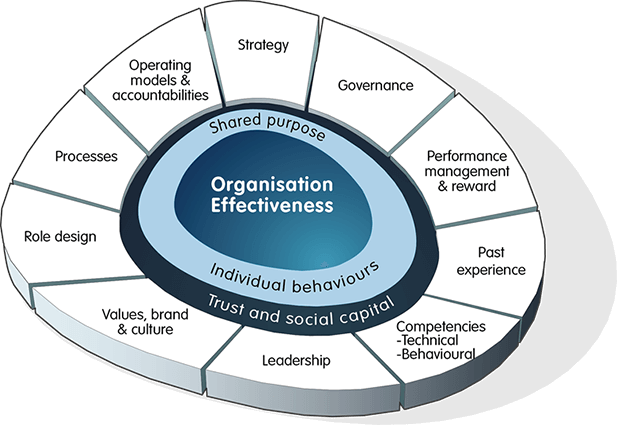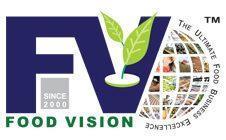Achieving Goals through Organizational Effectiveness
Organizational Effectiveness may be described in different ways, but the key understanding revolves around a concept of how effective an organization is in achieving its goals or expected outcome. Its the collaboration of resources, people, and processes to achieve certain objectives is what makes up organizational effectiveness.


There are expected traits of health and effective organizations.
- Well defined Structure and Clear Polices
- Shared Vision/ Open Communication
- Strong Leadership
- Goals Sharing / Performance Review/ Accountability
- Collaboration and Teamwork
- Motivated Employees/ High Morale
- Career Growth through Capacity Building
- Be understanding/ Handles Poor Performance
- Strong Risk Perception/ Mitigation/ Contingencies
- Adaptability to Advancement/ Measurement Culture


To induce Organizational Effectiveness, six attributes are always paramount.
- Leadership,
- Communication,
- Accountability,
- Delivery,
- Performance
- and Measurement.
Achieving Organizational Effectiveness – The Food Vision Way
Organizational Effectiveness Experts at Food Vision suggest OE to work on enhancing employee relationships, building worker skills, improving the employee experience alongside working on processes improvement. At the same time, the value must be given to creating the right employee culture and behavior.

Effective Leadership Style
Right and authentic Leadership style is key in making organizations effective. The organization must establish and employ the best leadership style and enhance engagement and shared decision making.
It always had been a question to find the right leadership style. Leading from the front, from the above or through democratic ways may have their own pros and cons but leading within and shared decision making may give confidence to employees. Effective Organization must adopt leaderful practice.

Strategic Planning, Setting Goals and Objectives
Among the fundamental traits of Organizational Effectiveness model is organization’s ability to plan and set their goals and logical and realistic objectives. Smart objectives are expected to offer clarity and produce better results.
Value of Critical Thinking
A solution oriented and problem-solving culture is encouraged for Highly effective organizations as it offers an environment of ongoing improvement. Critical Thinking is the key in managing contemporary workplaces. Application of reasoning, openness to except reasoning, data and evidence-oriented reasoning, communication, reflection, and systematic problem solving is an asset for Effective Organizations.


Culture of Preparedness
Effective Organization must build their Environment on the Culture of preparedness for foreseeable risks and crises situations. As important as it may be to identify risks and plan for ways to minimize those risks and their effects, it is equally important to establish monitoring systems that can provide early warning signals of any foreseeable crisis. It’s a stage of preparedness excellence.
Preparedness is a continuous cycle of planning, organizing, training, equipping, exercising, evaluating, and taking corrective action. Training and exercising plans are the cornerstone of preparedness which focuses on readiness to respond to all hazards, incidents and emergencies.
What Food Vision can offer?
Food Vision believes that tomorrow’s challenge is smart manufacturing and organizational effectiveness.
We have a mission to enable food operations in smart manufacturing mode under our global program Food Vision EDGE that heavily focuses on business excellence, organizational effectiveness, TQM, lean manufacturing and world-class manufacturing principles.




